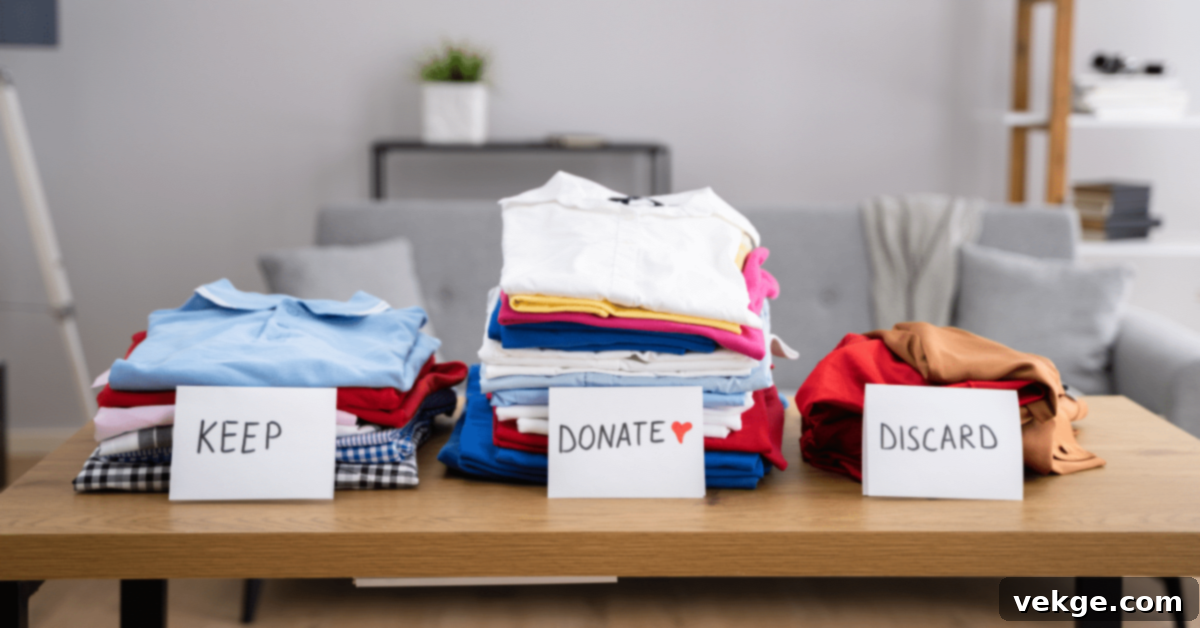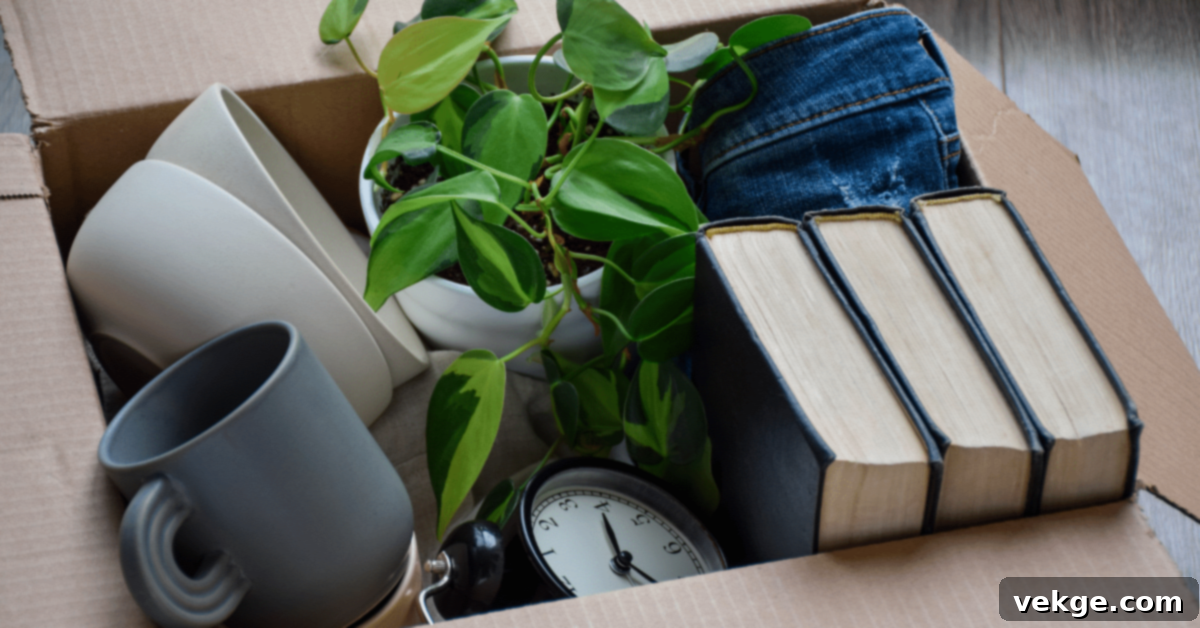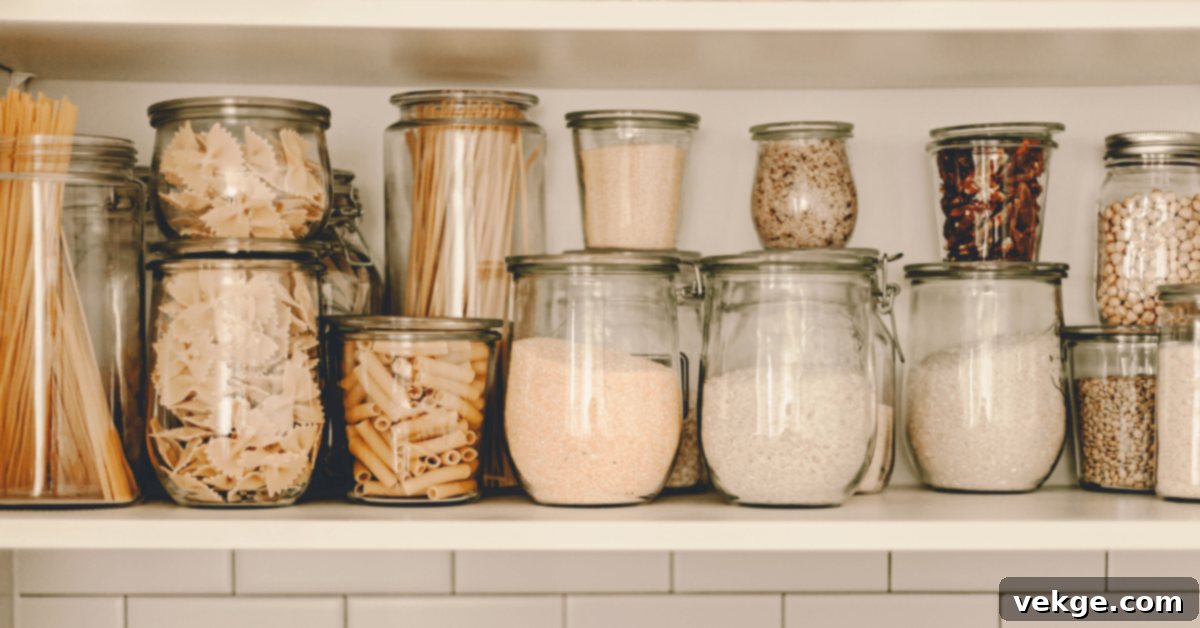Declutter Your Home: 11 Simple & Effective Tips for a Tidy, Stress-Free Living Space
A home filled with clutter doesn’t just look messy; it can significantly complicate every aspect of daily life, leading to increased stress and decreased productivity. Imagine frantically searching for your keys when you’re already late, or struggling to find space for dinner because your table doubled as a home office or craft station all day. When shelves, countertops, and closets overflow, it becomes nearly impossible to know what you own, let alone find what you need. Beyond the physical disarray, a disorganized and untidy home can drain your mental energy, reduce your focus, and contribute to a pervasive sense of overwhelm.
The good news is that reclaiming your space and peace of mind is entirely achievable. You don’t need to tackle it all at once. By adopting a systematic approach and implementing proven strategies, you can transform your cluttered chaos into a serene sanctuary. If you’re ready to declutter your home and embrace a more organized, less stressful lifestyle, these 11 simple yet powerful tips will guide you every step of the way.
1. Embrace the Three-Box (or Four-Box) Method for Efficient Sorting
One of the most effective and widely recommended strategies for tackling clutter in any area of your house is the “Three-Box Method.” For every section you plan to declutter – be it a single drawer, a shelf, or an entire closet – set up three distinct boxes or designated piles: Keep, Donate, and Throw Out. Some people find it beneficial to add a fourth category: Relocate, for items that belong elsewhere in the house but aren’t clutter. As you sift through your belongings, actively focus on identifying items for the “Donate” and “Throw Out” piles first. This mindset shift is crucial; instead of asking “What should I keep?”, ask “What can I let go of?”
Remind yourself of your ultimate decluttering goal: to create a more functional, peaceful, and organized living space. Look for alternatives to holding onto items simply because they “might” be important or usable someday. Consider how much value an item truly adds to your life right now. Items that are broken, stained, or beyond repair should go into the “Throw Out” pile. For things that are still in good condition but no longer serve you, such as clothing that doesn’t fit, duplicate kitchen gadgets, or unused decorative items, think about the joy they could bring to others. Donating these items not only clears your space but also benefits someone else who may appreciate them more.
The beauty of this method lies in its structured approach, preventing indecision and keeping you moving forward. Once your boxes are full, act immediately: take the “Throw Out” box to the trash, the “Donate” box to a local charity, and put the “Relocate” items where they belong. This immediate action prevents the sorted piles from becoming new sources of clutter.

2. Start Small and Celebrate Every Victory
The thought of decluttering an entire house, or even a single room, can feel incredibly overwhelming, especially if your mind already feels cluttered by the sheer volume of tasks ahead. This feeling of paralysis often prevents people from starting at all. The key to overcoming this is to **start incredibly small**. Instead of thinking about the entire kitchen, pick just one drawer. Instead of the whole bedroom, focus on a single shelf in your nightstand or wardrobe.
By narrowing your focus to a manageable micro-space, you reduce the initial hurdle significantly. Dedicate a short, focused amount of time to this tiny area. The goal isn’t perfection, but completion. Once that single drawer or shelf is organized, take a moment to acknowledge your accomplishment. Celebrate that small victory! Focusing on these positive outcomes, even if it’s just one less cluttered space, builds momentum and motivation. Each small success proves to yourself that you *can* do it, making it easier to move on to the next small project. This gradual approach chips away at the larger task without triggering the feeling of being swamped, allowing you to steadily remove clutter from your life, one tiny step at a time.
3. Minimize Book Piles and Free Up Valuable Shelf Space
Whether you’re an avid bibliophile or someone who simply accumulates books over time, stacks of books can quickly consume valuable space in your home. Proactive strategies can help reduce this clutter from the outset. For instance, college students can significantly cut down on the number of physical textbooks by taking advantage of college book rentals rather than purchasing new copies. This not only saves money but also prevents a pile-up of textbooks post-semester. If you already own textbooks you no longer need, services like BookScouter allow you to sell them back at the best possible prices, turning unwanted clutter into cash.
But what about novels, art books, cookbooks, and general non-fiction? These often hold sentimental value or seem too good to part with. Fortunately, there are many options for giving them a new life. Local schools, public libraries, homeless shelters, community centers, and even prisons regularly accept book donations. This ensures your beloved stories and informative texts find new readers. For books that are too worn, damaged, or outdated for donation, explore local recycling programs. Many paperbacks and hardcovers (after removing covers) can be recycled, preventing them from ending up in landfills.
The ultimate solution for decluttering books, however, often lies in embracing the digital age. E-books and audiobooks make physical clutter a thing of the past. You can access an entire library on a single device, freeing up shelves and reducing dust. Consider finding digital versions of your favorite titles and letting go of the paper copies. This shift not only saves space but also often provides portability and accessibility that physical books cannot match, truly making decluttering a breeze for your literary collection.

4. Cull Your Closets for a Streamlined Wardrobe
Closets are notorious clutter hotspots. Regardless of your interest in fashion, most adults accumulate far too many clothes they don’t genuinely wear or need. The goal isn’t to have an empty closet, but rather one filled with items that make you feel good and serve your current lifestyle. Begin by pulling everything out and assessing each item individually. Be ruthless: discard anything that is unsuitable, stained, ripped, or too worn to be presentable. These items serve no purpose other than taking up space.
Next, consider donating clothes that no longer fit your body or your current lifestyle. If an item no longer sparks joy, doesn’t fit properly, or simply isn’t “you” anymore, it’s time to let it go. A widely adopted rule of thumb is the “one-year rule”: if you haven’t worn a particular item in the past 12 months, it’s highly probable you won’t need to wear it in the next year either. This is especially true for highly specific items like elaborate formal wear, outdated trendy styles, or specialty costumes. Holding onto these items out of “what if” scenarios only perpetuates clutter.
For the clothing items you do decide to keep, think strategically about organization. Investing in a modular closet storage system can dramatically improve visibility and accessibility. This might include adjustable shelves, drawer dividers, specific hangers for different garment types, or clear storage bins. Group similar items together, and consider a capsule wardrobe approach if you’re looking to minimize even further. A well-organized closet not only saves you time in the mornings but also ensures you’re utilizing the items you love and need, making your daily routine smoother and less stressful.
5. Declutter in Small Chunks of Time to Avoid Overwhelm
Just as breaking down a large task into smaller spaces makes it less daunting, so too does breaking it down into smaller time increments. The idea of dedicating an entire weekend to decluttering can feel exhausting before you even begin, leading to procrastination. Instead, focus on the uncomfortable chore for just 10 or 15 minutes at a time. This short burst approach is incredibly powerful because it’s long enough to make noticeable progress but not so long that it leads to decision fatigue or burnout.
Set a timer on your phone for 10 or 15 minutes. Alternatively, create an upbeat ‘Declutter Playlist’ of a few favorite songs that collectively last about that long. The psychological benefit is immense: knowing there’s a clear end point helps your mind stay focused and prevents you from feeling overwhelmed by the huge stretch of complex and sometimes stressful work ahead. You’ll be surprised by how much you can achieve in these short, dedicated bursts. Over days or weeks, these small chunks of time accumulate into significant progress, making the entire decluttering process feel much more manageable and sustainable.

6. Set Strict Limitations on Sentimental Items
Sentimental items are often the hardest to let go of because they are tied to memories and emotions. However, unchecked, they can become a significant source of clutter, filling boxes in attics, basements, and closets without ever being seen or appreciated. Ask yourself some honest questions: Do you really need every floral arrangement from your wedding 20 years ago to remember the love you share with your spouse? Does your high school yearbook still bring you joy or provide any benefit, especially if you haven’t kept in touch with any of your classmates? Do you get any real benefit or enjoyment from that tiny plastic snow globe from a childhood family trip?
The truth is, while memories are priceless, most physical sentimental items don’t provide ongoing benefit to your life. Often, the memory itself is more important than the object. Consider digitizing photos, old letters, or children’s artwork. You can then look back through these digital files anytime without them taking up physical space. For truly irreplaceable items, designate one “memory box” or a single shelf for display. Everything else needs to be critically evaluated. Can you take a photo of it and then let it go? Does it genuinely evoke strong positive emotions *every time* you see it, or is it just “stuff” that once held meaning? Be selective; choose only the most meaningful pieces that truly represent important chapters of your life, and be prepared to let go of the rest, knowing the memories remain.
7. Go Digital: Streamline Your Media and Cherished Memories
In our modern era, streaming services, the internet, and digital files have rendered physical copies of most media and documents largely obsolete. Yet, many homes still harbor stacks of CDs from high school, collections of DVDs, or even VHS tapes, all taking up precious space. Do you genuinely still use these formats, or are they relics of a bygone era? The same applies to physical photo albums and vast amounts of paper documents.
It’s time to leverage technology for serious decluttering. Go through your collection of CDs and DVDs and discover where you can access the same movies, music, and TV shows online through streaming services or on your smart TV. Many platforms offer extensive libraries, and you might even find new favorites to enjoy. For photographs, invest in a good scanner or use a scanning service to digitize all your old photos. Store them on cloud services, an external hard drive, or a dedicated photo management platform. This not only frees up physical space but also ensures your precious memories are backed up and easily accessible without the risk of physical damage.
Similarly, for important documents, consider going paperless as much as possible. Scan bills, statements, and other paperwork, then securely store digital copies. Only keep physical copies of essential documents like birth certificates, passports, and property deeds. By transitioning to digital media and memories, you’ll dramatically reduce clutter, improve accessibility, and future-proof your valuable collections.

8. Set Up a Storage System that Truly Works (After Decluttering)
One of the biggest mistakes people make when decluttering is buying new storage containers *before* they’ve actually decluttered. This often leads to simply organizing clutter, rather than eliminating it, and can even exacerbate the problem by adding more items to your home. Never buy new storage containers for unnecessary things. Your first step should always be to reduce what you own.
Once you’ve pared down your belongings, then consider how to store the remaining items effectively. Avoid overly “fancy” or purely decorative storage containers unless they serve a dual purpose or genuinely contain items you frequently use in that specific room (e.g., a stylish covered basket for extra blankets in a guest room). Too many mismatched baskets or bins, especially if they’re opaque and unlabeled, can quickly create visual clutter and make it harder to find things. The goal is functionality and accessibility.
Opt for modular shelving units and clear, stackable tubs in closets, pantries, and other storage spaces. Transparent containers are particularly valuable because they allow you to see exactly what’s inside at a glance, eliminating the need to rummage through multiple bins. Always use clear, concise labels on your containers. This simple step prevents accidental repeat purchases, ensures everyone in the household knows where things belong, and helps maintain order over the long term. A well-thought-out storage system supports your decluttering efforts by providing a designated “home” for every item you choose to keep.
9. Keep Kitchen Clutter Under Strict Control
The kitchen, surprisingly, is often a prime location for significant clutter, and arguably the place where you want it the least. A cluttered kitchen hinders efficiency, makes meal preparation stressful, and can even discourage healthy eating habits. How can you cook meals efficiently when every countertop is covered, and every drawer is jammed with unused items, gadgets, tools, and overflowing ingredients?
Approach the kitchen decluttering process systematically: tackle it one drawer, one cabinet, and one countertop section at a time. For each item, ask yourself critical questions: “When was the last time I used this small appliance or tool?” “Do I really need a rice cooker, pressure cooker, slow cooker, steamer, *and* an electric wok?” “Why do I have three can openers and five whisks?” Be honest about duplicates, single-use gadgets you rarely use, and items that simply don’t fit your cooking style anymore. If it hasn’t been used in a year, or doesn’t actively enhance your cooking experience, it’s likely time to let it go.
Extend these decluttering efforts to your pantry and refrigerator as well. Old spices lose their flavor and potency, and you may realistically never use that bag of caraway seeds or fenugreek for a specific recipe you tried once. The half-full bag of specialty flour from your southern cooking experiments is just taking up valuable space. Regularly check expiration dates and toss anything expired or stale. Implementing meal planning can significantly help keep your pantry and fridge neat and organized in the future, as you’ll only buy what you need and use it before it goes bad. A minimalist, functional kitchen makes cooking a joy, not a chore.

10. Special Decluttering Tips for Kids’ Stuff
If you have children, you undoubtedly face a magnified challenge with clutter. Toys, arts and crafts projects, school papers, and unique “treasures” can accumulate at an astonishing rate. The key here is not just to declutter, but to get your children on board with the decluttering plan, fostering good habits from a young age.
Start by setting clear boundaries and designated spaces. For artwork, instead of keeping every single drawing, pick one or two places to display their current favorites. When they create something new, they need to choose an older piece to remove from display, either photographing it for a digital memory book or discarding it (with their agreement, if age-appropriate). This teaches them about curation and making choices. Limit the total number of toys they own. Implement a “toy rotation” system where only a portion of their toys are accessible at a time, keeping the rest in storage. This reduces visual clutter and makes old toys feel new again when they are rotated back in.
Introduce them to the idea of donating toys they no longer play with as much. Frame it positively: “These toys can go to other kids who might not have any, so they can have fun too!” This teaches empathy and generosity. For small “treasures” like rocks or found objects, designate a small, special box or shelf where they can keep their current collection. When it gets full, they’ll need to decide what stays and what goes. Empowering children to make these decisions (within limits) gives them a sense of control and responsibility over their own belongings, laying the groundwork for a more organized future.
11. Make a Promise to Banish Clutter Forever (Maintenance is Key)
Ultimately, the most effective way to declutter your home is not just a one-time purge, but a commitment to adopting a simpler, cleaner lifestyle for the long term. It’s incredibly easy to slip back into old habits, allowing stuff to accumulate again until your organized space reverts to chaos. True lasting organization requires ongoing effort and a shift in mindset.
To maintain your newly decluttered home, integrate regular maintenance into your routine. Schedule weekly or bi-weekly “clutter sweeps” alongside your other chores. This might involve a quick 10-15 minute walk-through of your house, putting items back in their designated homes, tossing obvious trash, and identifying anything that has begun to accumulate. A helpful rule to adopt is the “one in, one out” policy: whenever you bring a new item into your home (whether it’s a piece of clothing, a kitchen gadget, or a book), commit to letting go of a similar existing item. This prevents new clutter from forming.
Embracing a more mindful approach to consumption—thinking twice before purchasing something new—can also significantly reduce future clutter. By making a conscious promise to yourself and implementing these sustainable habits, you can enjoy a permanently clutter-free home, leading to reduced stress, increased productivity, and a profound sense of peace and mental clarity in your living space. The journey to a tidy home is ongoing, but the rewards are immeasurable.
